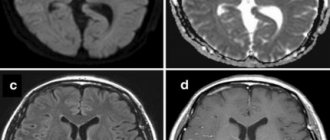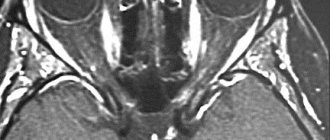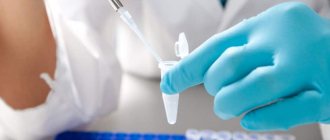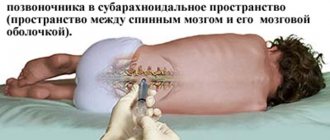Serous meningitis is a lesion of the membranes of the brain, which is characterized by a serous inflammatory process. Serous meningitis in children and adults develops when viruses, bacteria or fungi enter the body. In 80% of clinical cases, serous inflammation of the membranes of the brain and spinal cord is caused by viruses. Viral meningitis affects preschool children, schoolchildren and adults. At the Yusupov Hospital, the nature of meningitis is determined using modern laboratory methods for studying cerebrospinal fluid, blood and other biological materials.
To diagnose changes in the brain, innovative research methods are used using the latest equipment from European and American manufacturers. Doctors take an individual approach to the treatment of each patient suffering from serous meningitis and use modern antiviral and antibacterial drugs registered in the Russian Federation. Neurologists take into account the sensitivity of viruses to the drug and the patient’s body’s response to antimicrobial therapy. Rarely, serous viral meningitis is reported in adults.
Causes
Serous viral meningitis is an infectious disease.
In 75-80% of cases, viral meningitis is caused by enterovirus infection (Coxsackie and ECHO viruses). Less commonly, the cause of serous meningitis is the mumps virus, adenoviruses, Epstein-Barr virus (the causative agent of infectious mononucleosis), cytomegalovirus, herpes and measles viruses. HIV infection can also lead to the development of viral meningitis. Viral meningitis has a seasonal incidence, which depends on the type of pathogen. Most cases of serous meningitis occur in the summer. The mumps virus has a peak incidence in spring and winter. Serous meningitis can be not only viral, but also bacterial (with syphilis, tuberculosis), and sometimes fungal.
Transmission routes
The incubation period for serous viral meningitis is 2-4 days. Depending on the type of pathogen, the following paths take place:
- transmission of serous meningitis pathogens:
- airborne (from coughing, sneezing);
- contact (in the case of direct contact of a child or adult with the skin of a patient or with infected objects);
- water (when swimming in bodies of water contaminated with infectious agents).
The causative agents of serous viral meningitis reach the meninges by hematogenous (through blood vessels), lymphogenous (with lymph flow) or perineural (with cerebrospinal fluid) route. The peak incidence of serous meningitis occurs in the summer. Preschoolers and children of primary school age, as well as persons with immunodeficiency conditions or weakened by other serious illnesses, are most susceptible to the disease.
Enteroviral meningitis
The incubation period for enteroviral serous meningitis averages about 1 week. Urban residents, mainly children under 7 years of age who attend preschool institutions, are most often affected. Meningeal syndrome is usually benign, with improvement within a few days. Deaths are rare. Serous meningitis is accompanied by fever, headaches, photophobia and meningeal symptoms.
The clinical picture of enteroviral meningitis largely depends on the age of the patients. Newborns and young children (up to 2 - 3 months) are at particular risk.
Enteroviral damage to the central nervous system at this age is usually part of a severe systemic disease. In this case, serous meningitis and/or meningoencephalitis can be diagnosed in 27 - 62% of children with enterovirus infection. In the case of progressive development of systemic manifestations of infection, such as liver necrosis, myocarditis, necrotizing enterocolitis, intravascular coagulation, the disease resembles bacterial sepsis. The fatal outcome observed in some children is not associated with damage to the central nervous system, but is the result of acute liver failure (ECHO viruses) or myocarditis (Coxsackie viruses).
In older children and adults, the disease with enteroviral meningitis begins acutely, with a sudden increase in temperature to 38 - 40 -C. This is followed by the development of neck rigidity, headaches, and photophobia. Some patients experienced vomiting, loss of appetite, diarrhea, rash, pharyngitis, and myalgia. The illness usually lasts less than one week. Many patients feel significantly better shortly after a lumbar puncture.
Neurological symptoms associated with meningeal inflammation in young children include a stiff neck and bulging fontanel. Symptoms may be subtle. The development of serous meningitis is often accompanied by signs of the disease such as fever, anxiety, poor sleep, skin rashes, rhinitis, and diarrhea. In the case of a mild enterovirus infection, meningeal syndrome in children is benign and, as a rule, quickly, within 7-10 days, ending with complete recovery without residual effects. Spinal puncture has a beneficial effect on the course of serous meningitis, leading to a decrease in intracerebral pressure and contributing to the rapid improvement of the child’s condition.
The prognosis for children and adults who have had enteroviral meningitis is usually favorable. There are, however, indications that some children who have had enteroviral meningitis suffer from speech impairments and have difficulties in school learning. In adults, headaches may persist for several weeks after an infection.
Symptoms
Serous meningitis, as well as inflammation of the meninges of bacterial origin, is characterized by common meningeal symptoms:
- nausea;
- Strong headache;
- temperature increase;
- repeated vomiting.
Distinctive features of serous meningitis of viral origin are the very abrupt onset of the disease.
Consciousness is slightly impaired. When serous meningitis is detected, symptoms in children may be mild. This type of meningitis does not last long and has a favorable outcome. In most cases, there are no complications after serous meningitis. With serous inflammation, cerebral edema develops. The outflow of cerebrospinal fluid is disrupted. Brain swelling provokes an increase in intracranial pressure. Unlike bacterial purulent meningitis, the serous form of inflammation does not lead to massive exudation of neutrophils and brain cells do not die.
From the second or third day of the disease, serous meningitis manifests itself as a pronounced meningeal syndrome. A mandatory sign of serous viral meningitis is fever. Patients' temperature rises to 40 degrees, then after 3-4 days it decreases and after a while it rises again. 2 waves of high temperature are recorded. With mild viral meningitis, this does not always happen.
A painful headache constantly accompanies a patient suffering from viral meningitis. It starts from the temples, intensifies when moving the eyes, from bright light and harsh noise. This type of headache is difficult to control with painkillers.
Children may experience limb cramps and general irritability increases.
They become whiny and capricious. In newborns, the fontanel swells and a “brain” cry appears. Intoxication causes general weakness, malaise, muscle and joint pain. Patients are concerned about nausea, repeated vomiting, and lack of appetite. Abdominal pain and diarrhea appear. Often children, in addition to meningeal symptoms, show signs of acute respiratory viral infection:
- mucous discharge from the nose;
- a sore throat;
- cough.
Skin sensitivity increases.
Patients react sharply to loud sounds, bright lights, noise, and touch. A patient with meningitis feels much better in a quiet, darkened room. In this case, the child lies on his side in bed, his head is thrown back, his knees are pressed to his stomach, his hands are pressed to his chest. In infants, tension and bulging of the fontanel occurs, Lesage's symptom appears - if the baby is lifted up, holding it under the armpits, he pulls his legs towards his stomach and bends them. With viral serous meningitis, there may be minor disturbances of consciousness (stunning or drowsiness). Sometimes signs of damage to the cranial nerves develop, difficulties with swallowing, double vision, and strabismus appear. Motor activity disorders manifest themselves as partial or complete paralysis.
In patients with serous viral meningitis, the following meningeal signs are determined:
- Kernig's symptom - the inability to straighten a leg bent at a right angle;
- Brudzinski's symptom: lower (when trying to straighten one bent leg, a reflex flexion of the second leg occurs), and upper - when bending the head, involuntary flexion of the lower limb occurs.
- Babinski's symptom - with line irritation of the plantar surface of the foot, dorsal flexion of the first toe is observed.
The duration of serous meningitis is on average 10 days.
Make an appointment
Symptoms of meningitis
Signs of meningitis are as follows:
- severe pain in the head,
- temperature, pain in the muscles of the neck,
- hearing loss,
- fainting,
- vomiting and nausea,
- mental problems (paranoia, delusions, excited or apathetic state, increased anxiety),
- convulsive states,
- hives,
- drowsiness.
It all depends on the type of meningitis in adults , so the following stages of the disease can be noted:
- Purulent meningitis . The form is severe, pus appears in the brain capsules. This disease is provoked by bacterial infections, more precisely: staphylococcus, streptococcus, pneumococcus, meningococcus.
- Serous meningitis . The disease is less severe than the first option. At the time of inflammation, no pus appears. This is a kind of viral meningitis. This category includes such types as tuberculosis, influenza, mumps, and syphilitic.
Depending on the course of the disease, the following forms are observed:
- Instant. Symptoms of meningitis in children appear instantly. A person can die in the first 24 hours after infection.
- Spicy. Infectious type meningitis occurs within a couple of days after infection. A person can die instantly. Meningitis symptoms in adults have a bright course.
- Chronic. Symptoms gradually appear and get worse.
Depending on the duration of meningitis and the proliferation of inflammation, there are the following forms:
- Basal. Inflammation occurs in the center of the brain.
- Convexital. Pathological processes concern convex areas of the brain.
- Total. Inflammation affects all parts of the brain.
- Spinal. Inflammation is observed on the surface of the spinal cord.
Depending on the severity, the disease can be mild, moderate or severe.
Diagnostics
The diagnosis of serous viral meningitis can be confirmed or excluded only based on the results of a cerebrospinal fluid examination.
CSF is obtained using lumbar puncture. It is performed at the slightest suspicion of viral meningitis. Contraindications for spinal puncture for serous viral meningitis are:
- infectious-toxic shock.
- signs of brain herniation (a combination of arterial hypertension and bradycardia, increasing focal symptoms, depression of consciousness, impaired pupillary reactions);
- infectious lesions of the skin and soft tissues in the area of the spinal puncture;
- convulsive status.
Cerebrospinal fluid in serous viral meningitis is always clear and colorless.
Its pressure reaches 300 - 400 mm. water Art. In the cerebrospinal fluid, a moderate increase in the number of lymphocytes is determined (from 30 to 800 cells in 1 μl). In the first days of the disease, neutrophils can be detected in the cerebrospinal fluid, and from the second or third day lymphocytes appear. The protein content may be normal or reduced, the level of sugar and chlorides does not change. By slowly releasing 3-6 ml of cerebrospinal fluid during the first puncture, intracranial pressure decreases, so patients experience less headaches and significantly improve well-being. In the peripheral blood there is a reduced number of leukocytes, a slight increase in the content of neutrophils without a significant shift in the leukocyte formula to the left, and a moderate increase in the erythrocyte sedimentation rate. By the beginning of the second week of the disease, the number of eosinophils in the peripheral blood increases.
Expert opinion
Andrey Igorevich Volkov Neurologist, Candidate of Medical Sciences
The viral nature of inflammation of the meninges accounts for 80% of cases. Serous meningitis is most often caused by enteroviruses. The disease is most common in children, but in some cases, viral meningitis also affects adults. The symptoms of serous pathology have no distinctive features compared to other forms.Without prescribing etiotropic therapy, in more than half of cases, meningitis ends in death. The infectious disease quickly becomes severe and complicated. In 10% of cases, death occurs within 1–2 days, even with treatment started.
At the Yusupov Hospital, neurologists use their entire diagnostic arsenal to identify infectious diseases. The main method for detecting viral meningitis in adults is cerebrospinal fluid analysis. With its help, the pathogen is determined. CT and MRI are highly informative. Their results make it possible to determine the localization of the pathological focus in the brain. Based on the data obtained, etiotropic therapy is selected. Depending on the accompanying symptoms, symptomatic treatment is selected.
Treatment of meningitis
Treatment of meningitis in adults is determined by its causes.
For a bacterial infection, intravenous antibacterial drugs are prescribed as quickly as possible. The choice of antibiotics and their combinations is determined by the sensitivity of microorganisms. Until the doctor receives the results of the bacteriological analysis from the laboratory, he prescribes broad-spectrum drugs.
Glucocorticoids are also used - drugs from the adrenal cortex that suppress inflammation. They help prevent brain swelling and seizures.
For viral infections, antibacterial drugs are ineffective. Usually, in mild cases, treatment is limited to bed rest, drinking plenty of fluids and painkillers, anti-inflammatory, antipyretic drugs. For more severe cases, the doctor prescribes glucocorticoids. For herpesvirus infection, special antiviral drugs are used.
Fungal infections are treated with antifungal medications. For non-infectious meningitis caused by other causes, glucocorticoids are usually used. If inflammation of the meninges is caused by cancer, you need to focus on effective antitumor treatment.
In some cases, the patient's condition can deteriorate significantly within a matter of minutes. If you experience headaches, fever, or strange spots on the skin, you should consult a doctor - timely initiation of treatment at a neurology clinic in Moscow will help prevent serious complications, and perhaps even save a life. Our neurologists are ready to see you. Make an appointment by calling +7 (495) 230-00-01. We know how to help.
Take care of yourself, book a consultation now
Message sent!
expect a call, we will contact you shortly
Inflammation of the meninges can be severe and lead to serious complications. The earlier treatment is started, the greater the chance of recovery without consequences. And in order to receive medical help in a timely manner, you need to know about the main symptoms of the disease, and if they begin to bother you, immediately consult a doctor.
Treatment
Treatment of serous meningitis is aimed at preventing or limiting the formation of irreversible brain damage. Doctors do not use antibacterial drugs in the treatment of serous meningitis of viral origin. Means aimed at destroying infectious agents include:
- recombinant α-interferon (Viferon in suppositories);
- inducers of endogenous interferon (cycloferon, neovir);
- RNase;
- intravenous immunoglobulins (intraglobin f at a dose of 3 ml/kg per day), which are prescribed from the second to the fifth day of the disease or in severe condition of the patient.
In severe cases of the pathological process, glucocorticoids are used: prednisolone or dexazone during the first 2-3 days of the disease.
Antibiotics are prescribed only for the development of bacterial complications of serous viral meningitis. For serous meningitis caused by the herpes virus or Epstein-Barr virus, acyclovir is prescribed. Infants and immunocompromised patients need nonspecific and specific antiviral therapy. They are given intravenous immunoglobulin. To reduce intracranial pressure, diuretics are prescribed - furosemide, Lasix, acetazolamide. For severe cerebral edema, the starting drug is mannitol. In order to reduce the manifestations of intoxication, infusion therapy is carried out. The volume of intravenous fluid administered is 2/3 of the child’s physiological need for water. It must strictly correspond to the amount of fluid removed. A 10% glucose solution, rheopolyglucin, albumin, and plasma are used. Colloidal and crystalloid solutions are administered.
At temperatures above 38 C, antipyretics are used - ibuprofen, paracetamol. Anticonvulsants include seduxen (Relanium), GHB (sodium hydroxybutyrate 20%). For persistent disturbance of consciousness, intractable repeated convulsions, central hyperthermia (increased temperature) and arterial hypertension, sodium thiopental is administered intravenously.
The use of barbiturates requires the patient to be placed on artificial ventilation. It is carried out at the Yusupov Hospital using expert-class ventilators. All patients with serous meningitis are shown early administration of drugs that improve the metabolism of cells of the central nervous system. Neurologists use piracetam, nootropil, picamilon. Nootropics are first administered intravenously and then patients take them orally.
Ascorbic acid and riboxin help reduce brain energy deficiency and improve tissue metabolism during meningitis. In severe cases of the disease, antioxidants (cytochrome, cytomol) are prescribed. Medicines that improve cerebral circulation are prescribed to all patients from the first day of treatment. The drugs of choice are Cavinton (Vinpocetine) and dipyridamole (Curantyl). The most effective is the combined use of vasoactive and neurometabolic drugs (instenon and actovegin).
Treatment of serous meningitis
Serous meningitis responds well to treatment and if you seek medical help in a timely manner, there is a high probability of a positive prognosis. Inpatient treatment lasts 3-4 weeks. Treatment occurs only in a hospital setting and is determined after confirmation of the diagnosis and identification of the causative agent of the disease. In acute cases of the disease, treatment should be started as quickly as possible. The treatment course includes:
- Antibacterial drugs
- Therapy to relieve intoxication (Ringer's solution, blood plasma)
- Vitamins for maintaining the body (B2, B6, ascorbic acid, etc.)
- Diuretics to reduce intracranial pressure and prevent cerebral edema
- In some cases, oxygen therapy is prescribed - oxygen inhalations.
After treatment, young patients are followed up with a neurologist. In the future, meningitis will remind itself for a long time with headaches, increased fatigue, and problems with memory.
Consequences
Serous meningitis can have various consequences.
When the first symptoms of this disease appear, it is important to seek medical help promptly. The best thing to do is call an ambulance. Treatment of serous meningitis must necessarily take place in a hospital setting. Self-medication is unacceptable. The sooner adequate medical care is provided, the greater the chance that the consequences of the disease will never appear or will be minimal.
In cases where the patient delays treatment for too long, the following complications may occur:
- blindness;
- deafness;
- brain disorders;
- dysfunction of the speech apparatus;
- delay in psychomotor development.
In medical practice, in the advanced stage of serous meningitis, in the absence of treatment, paralysis, coma and death occurred. But this is rather an exception to the rule. In most cases, serous meningitis is not as serious as, for example, tuberculosis.
Even with favorable treatment and prognosis, the patient may experience headaches for a long time. If after a course of therapy pain persists for more than 2 months, you should definitely consult a doctor. If necessary, repeated examination is possible.
Treatment and consequences
The most dangerous of the serous lesions of the meninges is tuberculous meningitis (you can read more about it here). Among other diseases with serous inflammation of the meninges, the following factors should be noted. All patients with enterovirus infection require hospitalization (including for the purpose of quarantine). All patients are prescribed detoxification therapy, therapy aimed at relieving cerebral edema (if there are signs of edema), and general restorative treatment. In severe cases, it is necessary to carry out resuscitation measures and provide support for vital functions. There are no specific treatments for viral serous meningitis.
The prognosis and course of the disease are usually favorable. The main phenomena of inflammation of the meninges disappear 2-3 weeks after the onset of the disease and leave no consequences.
Prevention
During outbreaks of serous meningitis, it is not advisable for adolescents and young children to swim in open water.
You should always drink specially purified or boiled water, observe personal hygiene rules, wash your hands thoroughly with soap after using the toilet and before eating. It is also necessary to wash vegetables and fruits before eating, and if possible, pour boiling water over them. It is worth paying attention to any viral disease in children: acute respiratory viral infection, influenza, chickenpox, measles, mumps. The child’s contact with rodents and ticks should be minimized as much as possible, since they are considered carriers of viruses. To prevent measles, mumps, and rubella, infectious disease specialists recommend routine vaccinations for children. Meningitis caused by the influenza virus is prevented by seasonal specific vaccination.
If a viral infection proceeds atypically, the temperature does not decrease when taking therapeutic doses of antipyretic drugs, vomiting occurs, which does not bring relief, call an ambulance and call the Yusupov Hospital. The neurology clinic admits patients with meningeal symptoms 24 hours a day, 7 days a week. Doctors will determine the cause of meningitis and provide adequate treatment for the disease.
Make an appointment
Prevention of serous meningitis
How to protect yourself and your loved ones from infection with serous meningitis?
- Swim only in strictly permitted areas, especially for children. Since open bodies of water can be a source of infection.
- Drink only purified and boiled water
- Wash your hands thoroughly and observe personal hygiene rules.
- Thoroughly wash and pour boiling water over vegetables and fruits.
- Strengthen your body and lead a healthy lifestyle.
- Try to avoid contact with people who have meningitis. Some types of meningitis are spread through respiratory droplets such as kissing, coughing, sneezing, or sharing personal hygiene items such as a toothbrush or towel. If there are people with meningitis in your family, try to isolate them from other family members;
- After close contact with someone with meningitis, be sure to consult a doctor. Depending on the proximity of the exposure and the type of meningitis, you will need to take an antibiotic to prevent the disease;
- Be especially careful when traveling to potentially hazardous areas. Some types of meningitis are carried by animals and insects, so try to stay as far away from them as possible, and remember to use insect repellent.
- the body of both a child and an adult, from possible severe consequences in the form of meningitis.
Follow the schedule of preventive vaccinations, for example, the MMR trivaccine (measles, mumps, rubella). Vaccination helps prevent many diseases that can lead to meningitis. Most often, vaccinations against meningitis are given to children at an early age.










